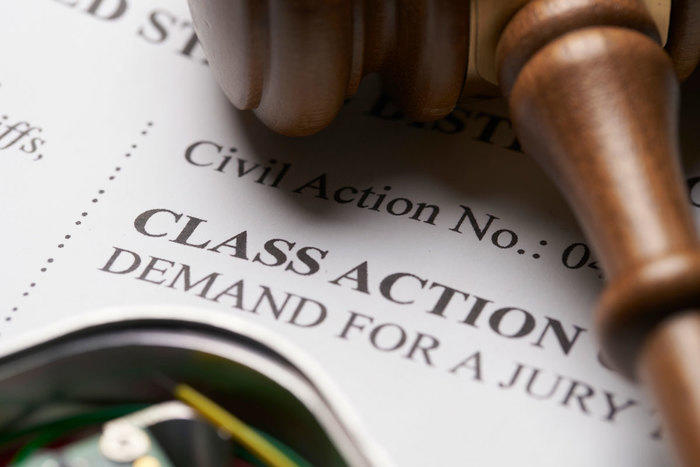Checking Out Course Activity Claims: What You Required to Know
Class activity legal actions have become significantly widespread in today's lawful landscape, with people signing up with forces to look for redress against firms and organizations. In this conversation, we will certainly check out the ins and outs of course action claims, losing light on their definition, the needs for declaring, and the prospective advantages and drawbacks included.
The Interpretation of Course Action Claims
Just what is the meaning of a course activity suit? A course activity suit is a lawsuit filed by a group of people that have similar claims against an offender. It allows a multitude of individuals, referred to as the class members, to join together and pursue their insurance claims jointly, as opposed to each individual filing a separate suit. Course activity legal actions are normally brought when the variety of potential plaintiffs is too big for private legal actions to be practical. They are generally used in cases involving consumer security, item liability, safety and securities fraud, and employment problems.
Among the crucial elements of a course action legal action is that the lead plaintiff, also referred to as the course representative, represents the interests of all the course participants. The court selects the lead plaintiff based upon their capability to relatively and effectively represent the course. The lead complainant works very closely with the course action lawyer to develop a strong instance and seek payment or various other treatments in behalf of the whole class.
In order for a class activity suit to continue, the court needs to certify the course. This means that the court establishes that the claim meets particular requirements, such as numerosity (a huge enough variety of course members), commonness (common inquiries of regulation or reality), typicality (the insurance claims of the lead plaintiff are typical of the course), and adequacy of depiction (the lead plaintiff and class advise are capable of standing for the class's interests) When the course is accredited, the lawsuit can move forward, and any judgment or negotiation reached will use to all class participants unless they select to opt-out.
Course action claims offer an essential function in providing access to justice for people that may not have the resources to seek their insurance claims independently. They also promote performance in the lawful system by consolidating comparable cases into a single action, lowering the burden on both the court and the celebrations entailed.
Needs for Filing a Class Action Claim

One more demand is that the class needs to be completely numerous. The exact number of class members required may vary depending upon the jurisdiction and the nature of the case. Nevertheless, it is usually expected that the course has to be huge sufficient that joining all the private plaintiffs into a single legal action is extra reliable than having numerous different claims.
Furthermore, it is crucial that the course agent, who is the private or entity bringing the legal action on behalf of the class, has common insurance claims and defenses to those of the class participants. The agent must additionally be able to properly and rather represent the interests of the whole course.

Benefits and Drawbacks of Course Activity Suits
Course activity suits offer both advantages and disadvantages for plaintiffs and offenders associated with the legal procedure. On the one hand, one of the significant benefits of class activity suits is that they provide a reliable and economical means for individuals with comparable insurance claims to seek justice collectively. By consolidating many similar instances into one legal action, class activities improve the lawful process and conserve time and resources for both complainants and defendants.
An additional benefit of class activity legal actions is that they allow individuals with minimal resources to seek settlement for their problems. In cases where the prospective recuperation is small, private claims might not be economically practical. By joining pressures in a course activity, complainants can merge their sources and raise their chances of obtaining a fair resolution.
Moreover, course activities can advertise social adjustment by holding firms accountable for their actions. By bringing attention to widespread misconduct or defective products, class actions can pressure companies to change their techniques, boost item security, or carry out reforms.
Nevertheless, class actions additionally have drawbacks. One possible negative aspect is that private plaintiffs may have limited control over the litigation process and the ultimate end result of the instance. The lead complainants and their attorneys normally make crucial decisions in behalf of the entire course, which might not always align with the individual interests of each course participant.
Furthermore, class activities can be extensive and taxing, commonly taking years to reach a resolution. The complexity and dimension of these claims can result in delays and long term litigation, which can be annoying for both accuseds and plaintiffs looking for a timely resolution.
Steps Associated With a Course Activity Claim
The process of a course action legal action usually begins with the recognition of a potential course and the filing of a problem. Once a team of individuals that share similar insurance claims against an accused is identified, the lead plaintiff, or course agent, submits a grievance in support of the entire course. This grievance details the supposed misbehavior and seeks damages or various other relief for all participants of the course.
After the grievance is submitted, the court will figure out whether the case satisfies the needs for class qualification. These requirements normally consist of numerosity (a large sufficient course), commonality (similar lawful claims), typicality (the lead complainant's claims are representative of the course), and adequacy of representation (the lead complainant and their lawyer can appropriately represent the class's rate of interests)
If the court licenses the class, notice is offered to all possible course participants, giving them the chance to opt-out if they want to seek their very own individual insurance claims - Archer-Daniels-Midland class action lawsuit. If BioVie class action lawsuit a sufficient number of course participants stay, the case will proceed to the exploration phase, where both sides gather proof and information appropriate to the insurance claims
Complying with exploration, the celebrations might involve in negotiation arrangements or proceed to trial. If the situation goes to trial and the class prevails, the court will determine the appropriate damages or alleviation to be granted to the course participants.
Current Site Class Action Lawsuits
With a strong understanding of the actions associated with a class action lawsuit, it is now vital to check out some current site situations that have made a significant influence in the lawful landscape. BioVie class action lawsuit. These cases have not just formed the way course activity suits are conducted yet have actually likewise caused adjustments in different industries
One such landmark instance is the Volkswagen discharges scandal, which brought about the largest course action negotiation in vehicle history. In 2015, it was disclosed that Volkswagen had installed software in their automobiles to cheat exhausts tests. This deceptiveness impacted millions of customers worldwide, leading to a course action legal action. The settlement gotten to in 2016 amounted to about $15 billion, compensating damaged cars and truck owners and penalizing on Volkswagen.
One more remarkable case is the Johnson & Johnson baby powder lawsuit. Countless females filed claims versus the company, declaring that their talc products triggered ovarian cancer cells. In 2018, a court awarded $4.7 billion in damages to 22 complainants. This case elevated concerns about the safety and security of baby powder and prompted Johnson & Johnson to change their item labeling.
These recent landmark situations show the power of course activity legal actions in holding companies liable for their activities and looking for justice for damaged individuals. They work as examples of how class action suits can produce considerable modifications and shield the civil liberties of consumers.
Final Thought
In conclusion, class activity claims are a legal device that enables a group of people to jointly seek justice for an usual complaint. Understanding the steps and needs included in submitting a course action claim is important for individuals looking for to pursue this lawful avenue.
One of the vital aspects of a class activity lawsuit is that the lead complainant, also recognized as the class rep, represents the passions of all the class participants.In order for a class activity lawsuit to continue, the court must accredit the class. This suggests that the court figures out that the suit fulfills specific requirements, such as numerosity (a huge sufficient number of course members), commonness (typical inquiries of legislation or reality), typicality (the claims of the lead complainant are typical of the class), and competence of representation (the lead plaintiff and course counsel are capable of standing for the course's interests) When the course is certified, the claim can relocate forward, and any type of judgment or negotiation got to will apply to all class members unless they pick to opt-out.
The procedure of a class action claim typically begins with the identification of a possible course and the declaring of a grievance.